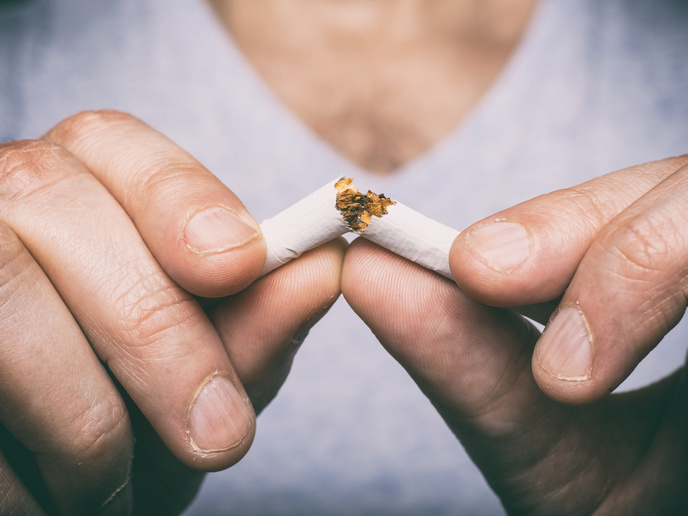Finding biomarkers for tobacco smoking relapse
Cigarette smoking is the main preventable cause of death and disability around the world. Passive smoking has major health risks, too. Many interventions exist to help smokers quit the habit, though only around 15 % quit for more than 6-12 months. Finding smokers at greater risk of relapse could support the development of personalised therapies to help them kick it for good. In the BioNic project, which was funded by the Marie Skłodowska-Curie Actions(opens in new window) programme, researchers sought to identify smokers more prone to relapse by looking for stress-related biomarkers before they quit. The project examined the links between deficits in emotional regulation and changes in brain activity linked to long-term nicotine abstinence. “A basic hypothesis was that participants who show stronger stress reactivity and reduced emotion regulation efficacy would be at higher risk of relapse,” explains Georgia Panayiotou(opens in new window), professor of Clinical Psychology at the University of Cyprus and BioNic project coordinator.
Focusing on stress-related biomarkers
BioNic focused on stress-related biomarkers in several key areas, following a 3-day protocol over a period of 6 months involving a stress-related task. The researchers: assessed smokers’ neurophysiology using EEG; collected saliva and blood samples to measure hormones, nicotine metabolites and inflammation markers; measured psychophysiology through heart rate and heart rate variability, and took self-reported measurements of emotional regulation and psychological characteristics. Participants were then asked to stop smoking for 24 hours. When they revisited the lab, the team redid the tests under stress. “At this point, some participants managed to achieve 24 hour abstinence and some didn’t,” notes Panos Zanos(opens in new window), BioNic lead researcher. Abstinence was again assessed 3 and 6 months later together with some psychological variables and biological sample measurements.
A mixed picture of smoking cessation
The results revealed a complicated picture. “Humans are extremely complex organisms, and with addiction, as a condition, even more so,” says Panayiotou. Yet the team learned a lot. During the first day of cessation, a stress-reactivity profile seemed to emerge. Brain activity was improved compared to those who couldn’t stop, with increased readiness and increased engagement during the stressor task. “Those who achieved 24 hours of abstinence seemed to be in a better position to deal with the situational demand,” Markos Apostolakis(opens in new window), the team’s data collection researcher, notes. Heart rate could predict abstinence, and a lower resting heart rate is linked to successful 24 hour abstinence. No predictors have emerged so far from biological samples or self-reported emotional regulation, though the researchers expect to find a lot more when they use more advanced techniques. “We have established collaborations to incorporate machine learning algorithms to assess different models using our project’s results,” adds Panayiotou.
Towards more refined quitting strategies
The results could help refine smoking cessation strategies by providing biomarker profiles of vulnerability and resilience, even prior to smoking cessation. “For clinicians, this means being able to recognise patients who may need more intensive or more all-round support before a cessation attempt or during withdrawal,” explains Panayiotou. “For smokers, it offers insights into why quitting is harder for some, shifting the focus from ‘lack of willpower’ that stigmatises the patient to measurable biological and psychological characteristics,” she adds. The team hopes to now also identify epigenetic markers that may contribute to relapse vulnerability. “After we finalise our results and identify gaps in the literature we will take the next step, whatever that might be!” Panayiotou says.



